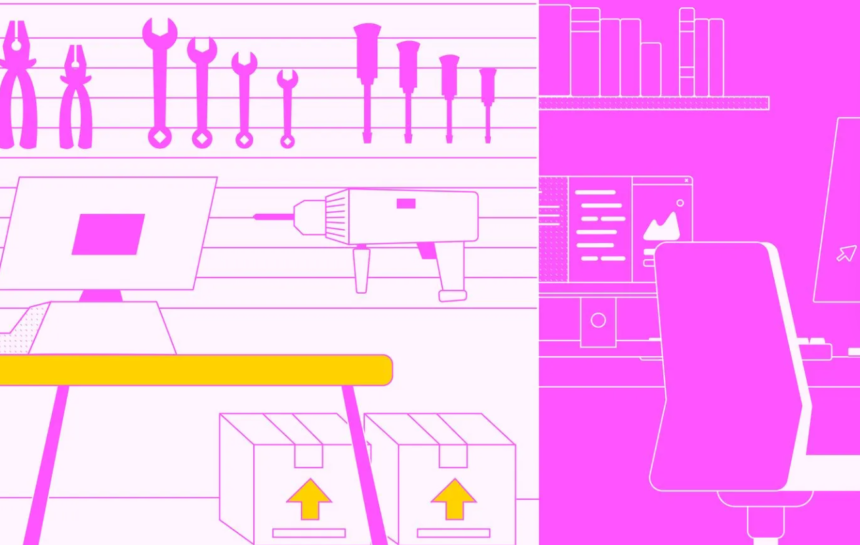The software testing market is set to exceed $90 billion by 2032, driven by the rise in digitalization and the ever-growing need for seamless, bug-free software solutions.
In the fast-changing world of technology, being a Quality Assurance (QA) tester in 2024 is more important and exciting than ever.
But how do you become a top-notch QA tester today?
This guide will show you the way, from learning the newest testing tools and techniques to building critical skills like automation and cybersecurity.
Whether you’re new to the field or aiming to boost your career, join us to discover how to become an essential part of the tech industry and ensure that every piece of software is the best.
How QA Testing is Changing Over the Years
The landscape of Quality Assurance (QA) testing has undergone significant transformations over the last few years, especially with advancements in technology and methodologies.
Here’s a look at how these changes are shaping the future of QA testing:
Integration of Security with DevSecOps
One major shift in QA testing is the integration of security into the development process through DevSecOps. This approach embeds security measures at every stage of development, ensuring vulnerabilities are identified and mitigated early.
As cyber threats increase become more sophisticated, the demand for robust security testing is increasing/
Rise of Continuous Testing
Continuous testing has become vital in Agile and DevOps environments, where frequent and rapid releases are the norm. This involves automated tests running continuously throughout the software development lifecycle, providing real-time feedback and helping catch defects early. This trend is crucial for maintaining high quality in fast-paced development cycles.
Emphasis on IoT Testing
With the expansion of Internet of Things (IoT) devices, testing has expanded to ensure these interconnected systems operate reliably and securely. QA testers now focus on functional and security testing for IoT devices to meet user expectations and safeguard against potential threats.
Evolution of Automation with AI and Machine Learning
Automation in testing is advancing with the integration of both artificial intelligence (AI) and machine learning (ML). These technologies help create smarter test cases, enhance defect detection, and improve overall test coverage. AI-driven tools can also adapt to changes in the application, making testing more efficient and effective.
Shift Towards Scriptless and Codeless Testing
The trend towards scriptless and codeless testing tools is growing. These tools enable testers without deep coding skills to create and execute automated tests utilizing intuitive interfaces. This democratization of testing allows more team members to participate in the QA process, enhancing collaboration and efficiency.
Adoption of Blockchain Testing
As blockchain technology extends beyond cryptocurrencies to areas like supply chain management and healthcare, the need for specialized blockchain testing is increasing. QA testers are now required to validate the security and functionality of blockchain applications, ensuring they meet stringent performance and reliability standards.
Embracing Mobile and Multi-Device Testing
The surge in mobile device usage demands comprehensive mobile testing strategies. QA teams are setting up mobile testing labs to manage the diversity of devices and operating systems. Additionally, multi-device testing ensures applications perform consistently across various platforms, which is critical in today’s multi-device world.
Increasing Importance of Exploratory Testing
Despite the rise of automation, exploratory testing remains crucial. This method allows testers to use their creativity and intuition to discover defects that automated tests might miss. It emphasizes the human element in testing, ensuring that applications provide a seamless user experience.
Enhanced Focus on Cloud-Native Testing
With more applications being developed for the cloud, cloud-native testing has become essential. This involves testing applications designed for cloud environments to ensure they are scalable, reliable, and secure. As cloud adoption grows, so does the general importance of cloud-native testing.
These trends highlight the dynamic nature of QA testing and underscore the need for QA professionals to update their own skills and adapt to new technologies continuously.
How to Become a Professional QA Tester in 2024
Becoming a professional QA tester in 2024 involves a mix of education, skill development, and practical experience.
Here are the steps and tips to guide you on how to become a QA tester:
Educational Foundation
- Get a Relevant Degree: While a degree isn’t always mandatory, having one in computer science, information technology, or a related field can offer a strong foundation. Courses in software development, databases, and systems analysis are particularly beneficial.
- Certifications: Earning certifications such as ISTQB (International Software Testing Qualifications Board), CSTE (Certified Software Tester), or Selenium WebDriver certifications can bolster your credentials and demonstrate your commitment to the field.
Develop Essential Skills
- Technical Skills: Boost your proficiency in programming languages like Java, Python, or JavaScript is crucial for writing automated tests. Familiarize yourself with testing tools like Selenium, Appium, and JIRA.
- Understanding of Testing Types: Learn various testing methods, including manual, automated, performance, security, and exploratory testing.
- Soft Skills: Good communication, analytical thinking, attention to detail, and problem-solving abilities are very essential for a QA tester.
Gain Practical Experience
- Internships and Entry-Level Positions: Start with internships or entry-level positions in QA. This hands-on experience is invaluable for understanding real-world testing environments.
- Work on Projects: Engage in open-source projects or freelance testing to build your portfolio and gain practical knowledge.
Learn Automation Testing
- Master Automation Tools: With the increasing emphasis on automation, mastering tools like Selenium, Appium, and Cucumber is critical. These tools help in creating robust and repeatable test scripts.
- Understand CI/CD: Familiarize yourself with Continuous Integration/Continuous Deployment (CI/CD) pipelines and tools like Jenkins, Travis CI, or GitLab CI. These are integral to modern testing environments and ensure that automated tests are run continuously.
Stay Updated with Trends
- Keep Learning: Technology evolves rapidly. Stay updated by reading industry blogs, attending webinars, and participating in professional communities like the Association for Software Testing (AST) or local meetups.
- Explore New Technologies: Delve into emerging areas like AI/ML in testing, blockchain testing, and IoT testing. Staying ahead of such trends can provide you a competitive edge.
Build a Strong Network
- Join Professional Communities: Engage with QA communities on platforms like LinkedIn, Stack Overflow, or Reddit. These communities can provide support, resources, and job opportunities.
- Attend Conferences and Workshops: Participate in conferences such as QA&Test, STARWEST, or Agile Testing Days to learn from industry experts and network with peers.
Develop a Professional Online Presence
- Create a Portfolio: Showcase your skills and projects on platforms like GitHub. A well-maintained portfolio can impress potential employers and clients.
- LinkedIn Profile: Keep your LinkedIn profile updated with your latest skills, certifications, and experiences. Connect with industry professionals to expand your professional network.
Apply for Jobs
- Tailor Your Resume: Customize your CV to highlight relevant skills and experiences for every job application. Use the kinds of keywords from the job description to pass through applicant tracking systems.
- Prepare for Interviews: Practice common QA interview questions and scenarios. Show your ability to adapt to new tools and technologies and your problem-solving skills.
Your Guide to Becoming a Successful QA Tester in 2024
Starting your journey as a QA tester in 2024 is an exciting adventure filled with opportunities to grow and innovate.
By building a solid foundation, learning the latest tools, and staying curious about industry trends, you’ll be well on your way to a successful career.
Remember to network, share your knowledge, and continuously seek new challenges. With dedication and passion, you’ll become an indispensable part of the tech world, ensuring top-notch software quality.














